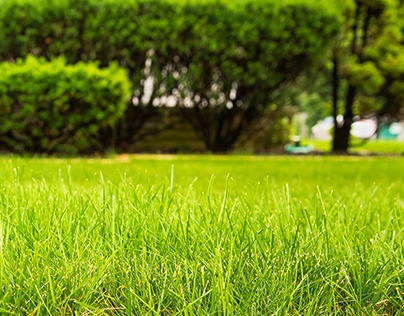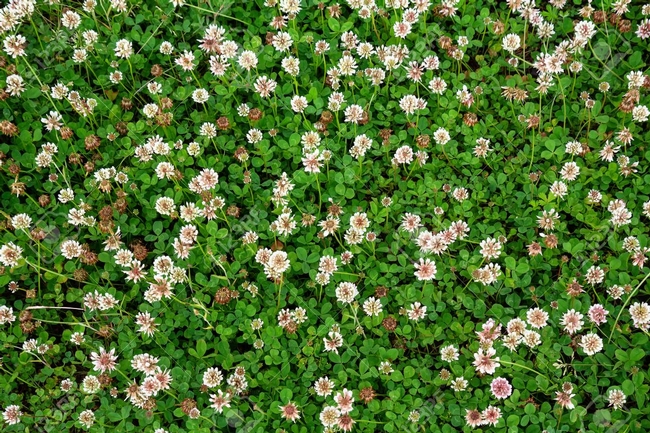
Unfortunately, the predominant grasses promoted by Scott's were brought from European locales with abundant annual rainfall. After World War II, the advent of the lawn mower and powerful chemical fertilizers truly brought residential turf to the masses. However, attempting to homogenize installation of the same grass seeds (Kentucky Blue and Bent grasses) across all locales required a massive influx of irrigation, fertilizers and potent weed killers.
A NASA funded report in 2005 demonstrated that over 50,000 acres of residential turf was actively being cultivated by homeowners in the United States alone. That same report included data from the Environmental Protection Agency (EPA) citing the annual water use, exclusive of rainfall, by the typical suburban lawn at 10,000 gallons.
It is not, therefore, surprising that more and more homeowners, municipalities, business owners and academic institutions continue to consider viable replacement(s)for their existing expanses of turf grass. California, in particular, has been active in promoting “water wise” landscaping in light of persistent drought conditions.
The first Model Water Efficient Landscape Ordinance (MWELO) was established in 1992 for new and renovated properties. The original focus was to limit landscape space larger than 2500 square feet to no more than 50% turf grass. In 2010, a revision was adopted to reduce water usage by 14%. (It was commonly thought that newer, more efficient sprinkler technology would allow users to maintain their existing landscape while using less water.) MWELO was again amended in 2017 to further reduce water usage.
Municipalities, Long Beach and Los Angeles for example, have offered rebate programs aimed at providing homeowners cash incentives to remove residential turf and replace it with water wise landscaping options (such as xeriscaping, native and drought resistant plants and rock or hardscape). Limited funding and mixed residential results have compromised widespread success rates for such programs.

It is no secret that white clover (Trifolium repens) varieties are already a regular addition to ornamental turf seed currently available at retail locations across the nation. Both Dutch and New Zealand white clover varieties stand up to most foot traffic when paired with grasses, are low growing, are hardy in USDA zones 3-13, and set nitrogen as a benefit to those grasses (thereby reducing fertilizer needs).
There are currently a few schools of thought circulating when it comes to utilizing clover as a turf alternative. The first is whether or not the intent is to over-seed, i.e., leaving all or part of the existing turf in place and simply using micro-clover to cover bald or problem spots (such as excessive weed or soil-based issues). The second is simply opting to establish a monoculture of either clover or micro-clover after complete removal of the existing turf. A third concept uses a blend of multiple clovers in addition to low growing wildflowers (successfully in use by the city of Richmond, BC) to create an alternative urban setting that conserves all resources and reduces costs.
Unlike municipal or academic settings which often have more than one usage requirement for their turf sites (sport fields, parks and public access, etc.), the average suburban homeowner need only consider how and why they use or want to use their existing lawn. Is it merely ornamental or is the exterior living space in regular use by children, adults and pets?
Specific clover attributes to consider in the decision-making process include:
- micro-clover, unlike white clover, does not flower (for those with allergies).
- both clovers will grow to about six inches in height for a more pasture appearance but will tolerate mowing to three inches to encourage spread.
- both tend to successfully compete with most weeds found in lawns and tend to discourage insect pests.
- both are relatively deep rooted but neither does particularly well in heavy traffic areas.
- both do very well as niche growers between pavers or stepping stones.
- both tolerate compacted soils, and
- neither will yellow in response to pet urine.
While establishing a monoculture of clover or micro-clover would likely yield the greatest long-term benefits for a homeowner by eliminating mowing, reducing water consumption once established, attracting pollinators with white (or red) clover, improving soil and eliminating the need for fertilizer to name a few, it would require the complete removal of the existing lawn in order to properly prepare, seed and germinate clover either in the springtime or in late fall.
If, on the other hand, sites are well used by families, then over-seeding with clover could help reduce fertilizer needs and improve soil conditions. Either way households should realize a varying degree of reduced costs from water consumption, chemical application (whether fertilizer or weed abatement), labor costs (i.e., gardeners) and reduced time and maintenance investments.
The clover blend developed for use in British Columbia consists of Microclover (Trifolium repens var. Pipolina), White Dutch Clover (Trifolium repens), Sheep Fescue (Festuca ovina), Western Yarrow (Achillea millefolium), Baby Blue Eyes (Nemophila menziesii), Sweet Alyssum (Lobularia maritima), English Daisy (Bellis perennis), Roman Chamomile (Anthemis nobilis) and Perennial Ryegrass (Lolium perenne). To date, both installations of pasture setting at five-inch height and manicured cover at three inch height have been a resounding resource and investment success.
Despite its overwhelming benefits, white clover does have a few drawbacks. It is, in fact, drought tolerant, but will not thrive and spread when consistently denied water in hot conditions. This may cause some degree of aesthetic concern for homeowners, if, during the first season after sowing, insufficient seed has been installed and results in sparse growth. Installing in late fall often takes advantage of the wet season in order to sufficiently germinate seed however it can result in seed migration if water ponds at any point in the yard. Careful monitoring of the site and over-seeding will cure this problem and result in a thicker spring growth. As it is naturally invasive, defined parameters of containment are often required. It will grow, but not flower, in some shady locations and, most important, broadleaf herbicides will kill the clover if applied.
In a era where homeowners have become increasingly pressed for time and resources, sowing additional clover as a symbiotic supplement to turf, utilizing replacement clover blends to fashion a suburban pasture or establishing a monoculture of clover all appear to be promising options which provide suburbanites with viable alternatives for their exterior yard space; each according to their individual outdoor needs and functional desires.